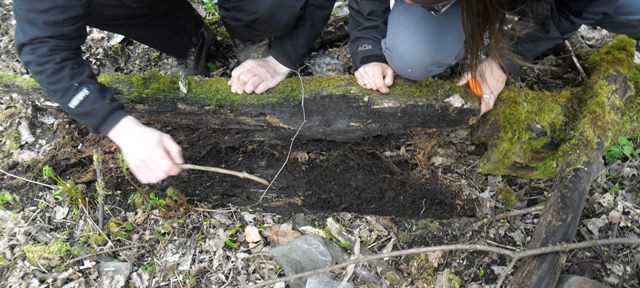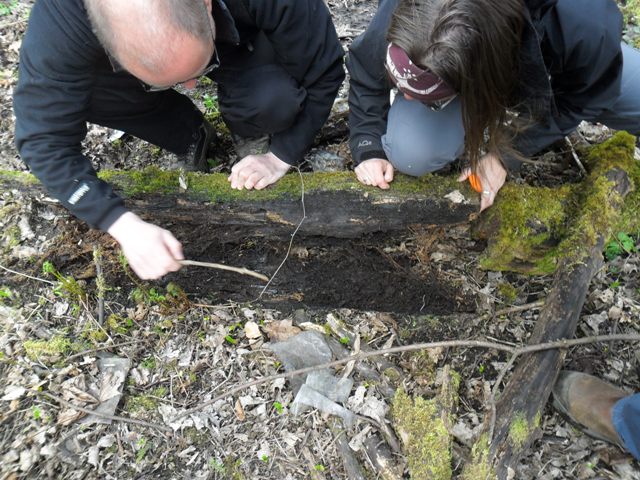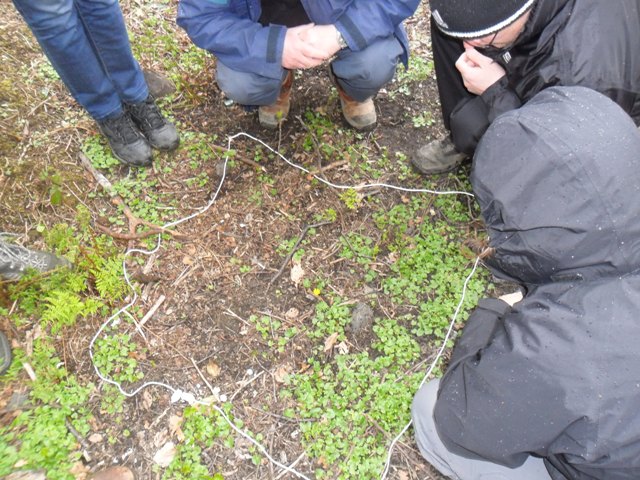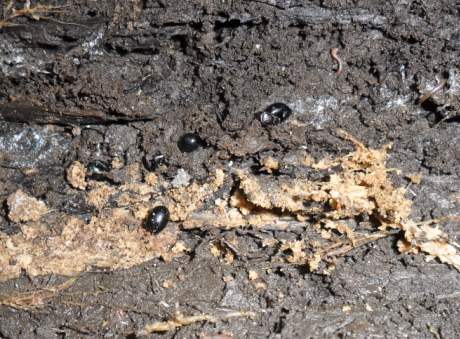
This year, as part of a consultation with the Forestry Commission Scotland, TCV have been working towards creating and trialling a Woodland Citizen Science toolkit for community woodland groups to take part in.
On Sunday, TCV started this new woodland citizen science pilot project in the Falkirk region with the Carron Dams LNR group in Larbert.
The pilot toolkit involves a range of citizen science surveys that people can take part in within their local woodland. Some of the surveys include looking at: deadwood, woodland plants, lichens on trees, nesting birds and spring seasonal changes (part of the Nature’s Calendar survey).
Deadwood is an extremely important feature of woodland ecosystems that unfortunately is often undervalued in woodland management decisions and frequently gets overlooked. A vast range of woodland biodiversity is dependent on deadwood at some point throughout their life cycle including: many invertebrates, fungi, plants, lichen and bryophytes (mosses and liverworts). Many of these species are decomposers that actually help to break down the deadwood and return vital nutrients to the soil. The biodiversity that deadwood supports (particularly the invertebrates) also act as main food sources for many birds and small mammals.
The Carron Dams LNR group found lots of different beasties living within and underneath the deadwood such as: worms, millipedes, woodlouse, harvestmen, spiders and beetles. Unfortunately, they also spotted some invasive New Zealand flatworm eggs! New Zealand flatworms (first recorded in Scotland in 1965) are widespread around Scotland, causing havoc with our native earthworms, which are its main source of food! See the picture below of the black bead-like eggs.
By surveying deadwood, we can try and get a better understanding of how biodiversity-rich and healthy our woodlands are, and help woodland managers understand the importance of deadwood and how to conserve it.
As well as the Carron Dams LNR management group taking part in this pilot project, we will also be working with the Polmont woodland group. We hope to get their feedback on how useful and easy-to-use these surveys are, and to find out if they feel their skills, knowledge and understanding of their woodland has improved.


